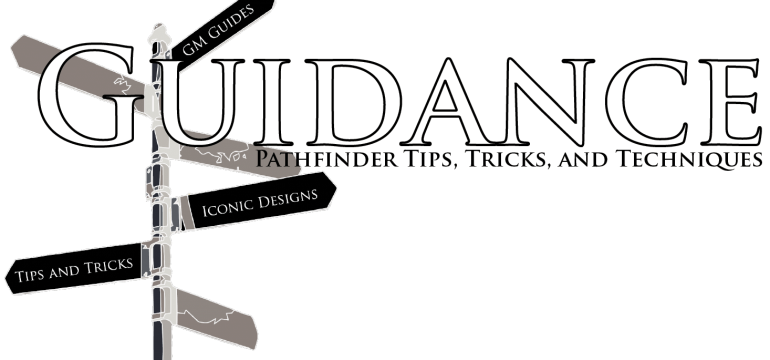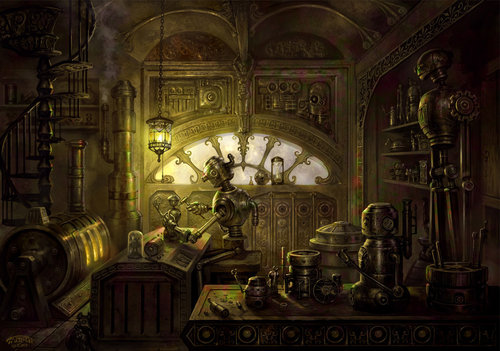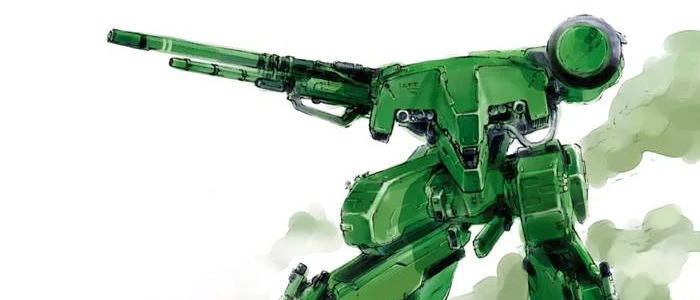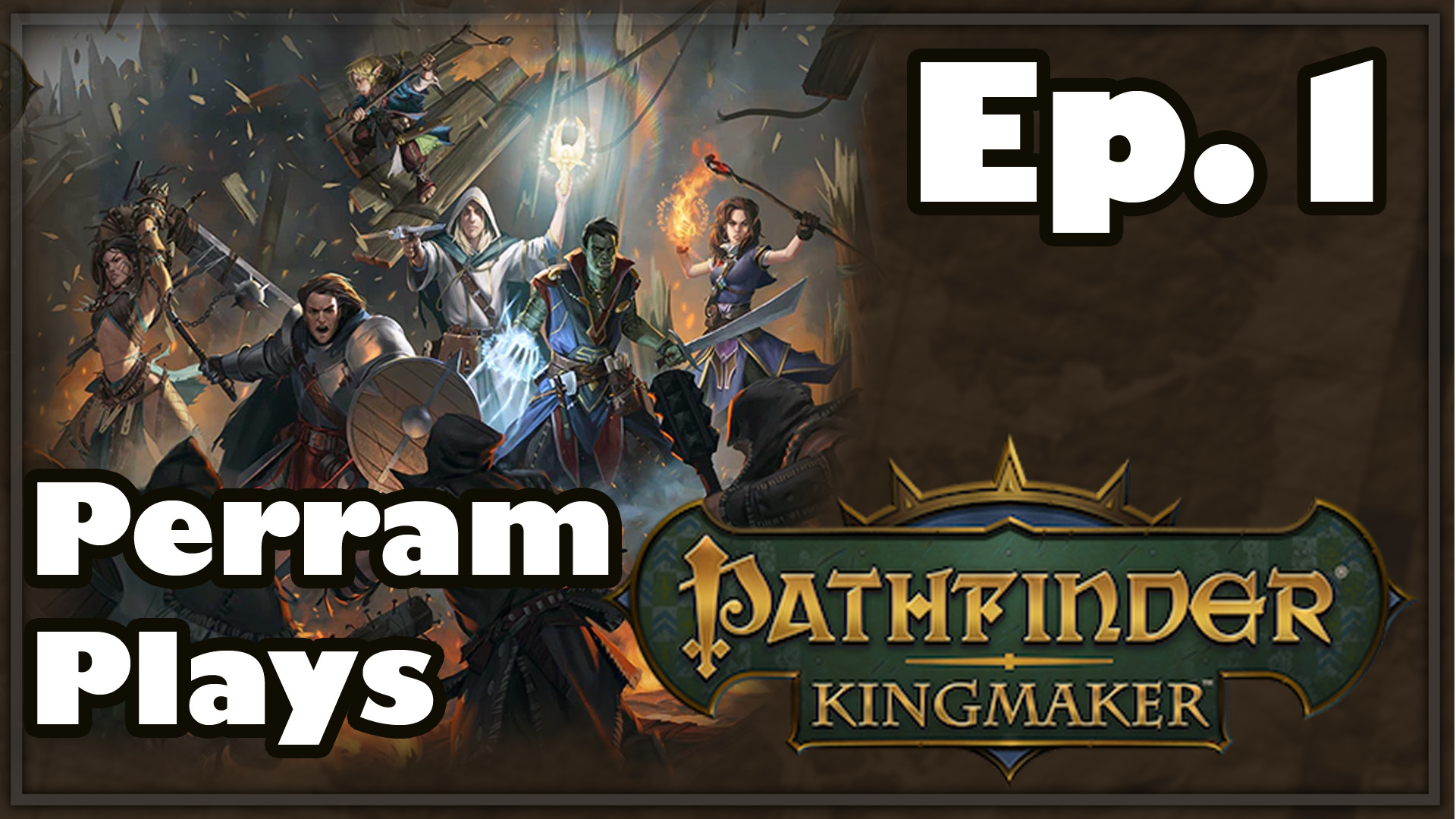Hello, everyone!
For the last few weeks, I’ve been writing an awful lot about the Pathfinder Playtest and different design choices that have (or haven’t) gone into it. I know I said I was going to try to do a blog each week throughout the month of September, and I ended up missing one or two. I’m sorry, everyone! It’s kind of hard to write about something that’s in such flux, you know! So instead of talking about something hectic and chaotic (as well as someone that I haven’t really had much of anything nice to say about in a little while), I’m going to switch gears and talk about something completely different—Pathfinder Society Scenario design! I’ve mentioned it a few times in the KDN Discord group, but I WROTE MY VERY OWN PFS SCENARIO! If you count KDN Alumni, this makes me the fourth KDN person to do so! (Luis wrote Ageless Ambitions, Monica wrote Captive in Crystal, Anthony wrote Return to Sky, and Ryan wrote Elven Entanglement). Despite having so many of us PFS authors on-staff, as far as I know no one has ever talked about the experience of actually WRITING a scenario, so that’s what I’m going to do today on Guidance! Huzzah!
NOTE: There will be ZERO spoilers for Pathfinder Society 10-05: Mysteries Under Moonlight Part 1, A Testament of Souls in this post. Read at your leisure without fear!

The Developers! They’ve Choosen me!!
Step 1: The Choosening!
So, how do you get chosen to be a Pathfinder Society author? Honestly, I have no idea. My developer, the esteemed Linda Zayas-Palmer, chat all the time, and she sort of just asked me out of the blue after previewing the general hook to me. Now, Linda knew I wanted to write a scenario (It was actually on my Pathfinder v1 Bucket List, ala the list of things I wanted to do before PF1 ended) and I had a lot of good vibes surrounding my work on the … half-dozen products I’ve written between Pathfinder and Starfinder. I also had some adventure-writing experience; I wrote Yuletide Terror for my imprint company, Everyman Gaming LLC, and gifted Linda a copy for the holidays. (Whether or not she read it, though, I had no idea. I gave her a copy because she was a neverending fountain of support and good vibes while I was writing that behemoth of a product.) To put it another way, I had a LOT of notches on my belt before I got this gig.
If you’re looking to try to get Choosening’ed yourself, I’d recommend checking out the OP Open Call. LOTS of people get their start there, and Linda has assured me that its something she and John Compton use to determine who they want to offer work to. That just ain’t my story is all.
Step 2: The E-mail Bombardment and Outline #1
So, what does it look like when you get offered OP work? A million, million e-mails with a million, million words. No, seriously. The OP team gave me TONS of e-mails that included stuff like style guides, a general outline, a work timeline, Excel Spreadsheets with crazy-complex formulas for calculating treasure, and more. In contrast, I’ve gotten work from the Pathfinder Design Team that was basically, “Here’s an outline of what everyone’s doing. Get busy, and e-mail us back for a milestone and the final turn-over.” Getting all that information at once was overwhelming, even for someone as established as I am. I’m luckly that I was doing a two-parter, and had the experienced (and amazing) Crystal Malarsky to help guide me through the process. With Crystal and Linda, I hammered out my first working outline for the scenario, that had a basic table of events and encounters, as well as other plot-relevant information. This outline was VERY particular; I had to hit specific key bits of information that the team asked for, and it was even submitted for approval (which included revisions and changes that had to be made). With all that placed together, I moved on to the rough draft.

Let’s be serious, who WOULDN’T want to marry this guy?
Step 3: The Rough Draft
Despite the name, the Rough Draft is basically a full copy of the scenario, written as if it were going to be published tomorrow. I had to write EVERYTHING. Encounters, box text, story, and so on. Now, for me, I ended up writing in a flurry of anxiety. I had the whole rough draft done about one week after the scenario was assigned to me, which is REALLY not how you should do it. But hey, anxiety prevailed? I think? Getting done early doesn’t let the developer get to your turnover faster; after all, a scenario is basically released to the world within a few weeks of its completion, so Linda had work she had to do. She couldn’t read my scenario until my schedule said that it was done—my schedule was also her schedule.
So a few weeks later, I got the report back from Linda. It was a huge, two-page document of things that needed to be changed that was frankly the best bit of feedback that I have ever gotten for a professional piece of work I’ve done. Seriously. There were notes about how encounters should be changed, story elements offered, and so on. As an example, my scenario takes place in Magnimar, and one thing I REALLY wanted to do was perform some good, old-fashioned character surgery on the infamous Venture-Captain of Magnimar, Shelia Heidmarch. As a result, my scenario included a scene where the PCs get to see Shelia interact with her husband in a very different light then is typical. I wrote them like a married couple, with quips and whatnot. I also couldn’t recall Shelia’s husband ever being in print anywhere, so I wrote him as a foil to Shelia’s character. (He was very “Coran” from Voltron: Legendary Defenders.) Turns out that my knowledge of Golarion is incomplete, and Mr. Heidmarch is just as professional as his wife. Whoops! (Don’t worry Coran, I’ll get you into a fantasy world someday, just you wait….)
My scenario needs a LOT of tweaks, and I ended up spending another week cleaning it up. Again, take more time then I did. The 16-hour days I spent working on my scenario are NOT something I’d advise to others. I just got obsessive, really, really obsessive. (NOTICE ME, COMPTON-SENPAI!!!!) As I worked, I pretended I was a GM running my scenario for others, and read it aloud in my best GM voice. I even did a little bit of wacky encounter design, and put stuff that I think are pretty “hallmark” of my style in the adventure. Yes, that does mean that there’s at least one kitsune in the adventure (which I’m told by a number of fans is a big deal because apparently the PFS Community thinks that OP hates kitsune and is ignoring them), but more importantly I put a lot of fun investigative, social encounters into the adventure. Basically, I wrote a PFS scenario that I would want to play and that features plenty of opportunities for skill-based characters to shine! (And later get mauled to death in zany, atypical combat!!!)
Step 4: Two Month of Agonizing Waiting
Turns out that once you hand over a scenario, there’s a lot of waiting to see what it’ll look like. The worst was September! But then my scenario came out, and it turns out that the month AFTER the scenario comes out is even worse, because you gotta wait for people to play it! No!!!
But during this time, I did get a chance to sneak a peak at my scenario and look at stuff that changed. For one, a lot of my box text ended up getting shrunk down into small bits of descriptive text for the GM to use as they wanted. Personally, I prefer a script, but apparently the rest of the world doesn’t. I guess that’s life—a lesson in learning. Text was shifted here and there, and overall the scenario looks a lot cleaner. (Though there are some places that I, as the author, look at the scenario and go, “NO! HOW WILL THE PLAYERS KNOW ABOUT LITTLE TIMMY’S TRAGIC BACKSTORY NOW?!?!”, overall it’s probably best that what was cut was ultimately removed.)
One of the most fun parts of seeing the final product is seeing the boon you’re assigned. We writers don’t have any say or input in that, but it’s fun to see the outcome.
Closing Thoughts
Overall, I felt that scenario-writing was a lot of fun, even if I totally wasted my opportunity to enjoy the experience by power-driving through it so quickly. I’m hoping that y’all like my scenario, and I’m REALLY looking forward to seeing what people thought of it. (I’m also hoping I get to write more, but I guess we’ll see, won’t we!)
That’s all for my article this week. I haven’t decided what I’m going to do next week; to be honest, a few REALLY awesome Player Companions have come out, and I’m thinking about doing some Iconic Designs. What do you think? Leave all comments below, and don’t forget to chat with me on the Know Direction Discord Server. Until next time, I’m signing out!

Alexander “Alex” Augunas has been playing roleplaying games since 2007, which isn’t nearly as long as 90% of his colleagues. Alexander is an active freelancer for the Pathfinder Roleplaying Game and is best known as the author of the Pact Magic Unbound series by Radiance House. Alex is the owner of Everyman Gaming, LLC and is often stylized as the Everyman Gamer in honor of Guidance’s original home. Alex also cohosts the Private Sanctuary Podcast, along with fellow blogger Anthony Li, and you can follow their exploits on Facebook in the 3.5 Private Sanctuary Group, or on Alex’s Twitter, @AlJAug.







Hey Alex, congratulations. And I agree with you, I would much rather have box text than text that I have to highlight and treat as box test anyway so that the players get the full description. Sometimes key details get skipped that way.
I would love to see more PF1 Iconic Designs. I really miss reading those, partly for your creativity, and partly to see if we agree on how certain rules are interpreted.